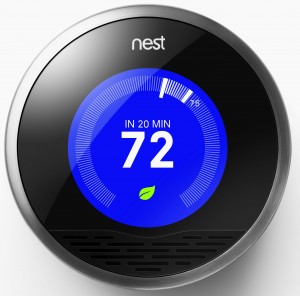As I’ve covered before, the grid of the future will encourage people to use electricity at optimal times and not use it when electricity comes from dirty or expensive sources. It sounds straightforward but hard to execute in practice. Some have dubbed this demand response as “flexiwatts” — a term I admit to liking.
Now California is going after this demand response opportunity big time, with aggregators facing a deadline today to submit bids to investor-owned utilities. What that means in practice is that a company will be bundling a bunch of customers, ensuring the ability to moderate their electricity use on command and in unison, and then selling those bundled “flexiwatts” to utilities as a resource on par with generation.
The precedent is already there:
In September, Stem Inc. successfully bid aggregated customer storage systems into the CAISO real-time market using Olivine technology, as a demand response resource, part of a pilot program testing integration of the new resources. What to the wider grid looks like a reduction in demand can in fact be battery storage serving a client load, the company said.
“We’re sending energy to serve the clients’ load, so it looks to the grid like load going down,” Ted Ko, Stem’s director of policy, told Utility Dive last month. “It’s a new form of demand response, but it looks to the grid like demand response.”
Stem, along with EnerNOC, SolarCity and Tesla are all expected to submit proposals, GTM reports.
Experts expect a big response — ahem — to the solicitation today.
 Part of securing big social and economic changes is simply marketing. And in the world of energy, we have a challenge with a confusing, jargon-filled economic and technological system. So it’s hard to reach the public with some of the big changes needed to achieve a clean grid with new renewable-oriented technologies.
Part of securing big social and economic changes is simply marketing. And in the world of energy, we have a challenge with a confusing, jargon-filled economic and technological system. So it’s hard to reach the public with some of the big changes needed to achieve a clean grid with new renewable-oriented technologies.
With that in mind, it’s somewhat encouraging to see a new term — “Flexiwatts” — to describe the otherwise clunky “demand response.” While “demand response” may not make much sense on the surface, it refers to a critical concept: the idea that electricity users adjust their usage based on grid needs and price signals. This simple-sounding idea can make a huge difference reducing the need for the dirtiest power on the hottest days and also to integrat intermittent solar and wind energy.
Here’s the concept: when solar production peaks mid-day, users are encouraged to run most of their appliances, ideally through automation. Think of your networked dryer essentially being told to run by the grid at that time, when electricity prices hit bottom. And then when solar production tails off later in the day, maybe your devices wait to charge or your refrigerator slightly delays a cycle.
The result? The grid becomes cleaner and ratepayers save money by using the cheapest electricity the most and avoiding the expensive, dirty energy.
“Flexiwatts” can help communicate this idea to gain public support, as Chris Mooney at the Washington Post reports on a new Rocky Mountain Institute study:
“In the residential sector alone, widespread implementation of demand flexibility can save 10–15% of potential grid costs, and customers can cut their electric bills 10–40% with rates and technologies that exist today,” says the Rocky Mountain Institute report. “Roughly 65 million customers already have potentially appropriate opt-in rates available, so the aggregate market is large and will only grow with further rollout of granular retail pricing.”
Key to enabling demand flexibility are in-home “smart devices” — notably smart thermostats and programmable timers for dryers, hot water heaters, electric vehicle chargers, and other large consumers of energy. Some already exist, like Google’s Nest Thermostat.
Coupled with better ratemaking and these new networked appliances, hopefully we can soon see “flexiwatts” take hold in widespread fashion.
Then next up? “Negawatts” — or saved energy from efficiency measures. But that’s another story.


